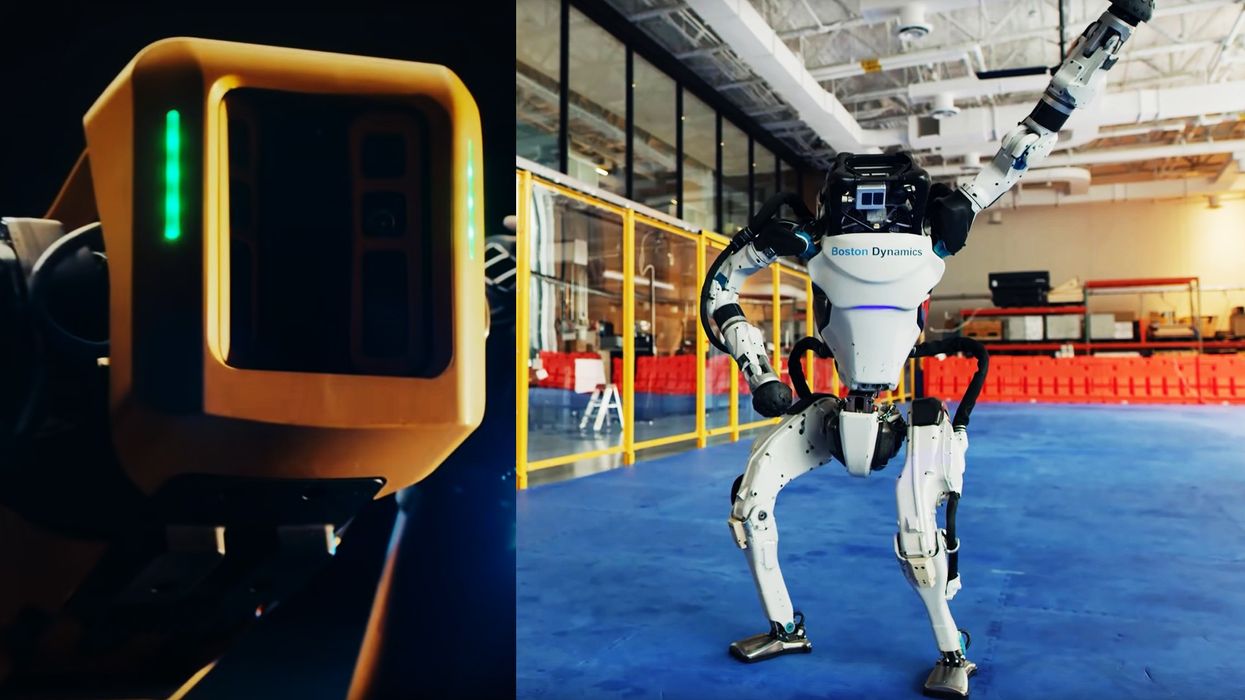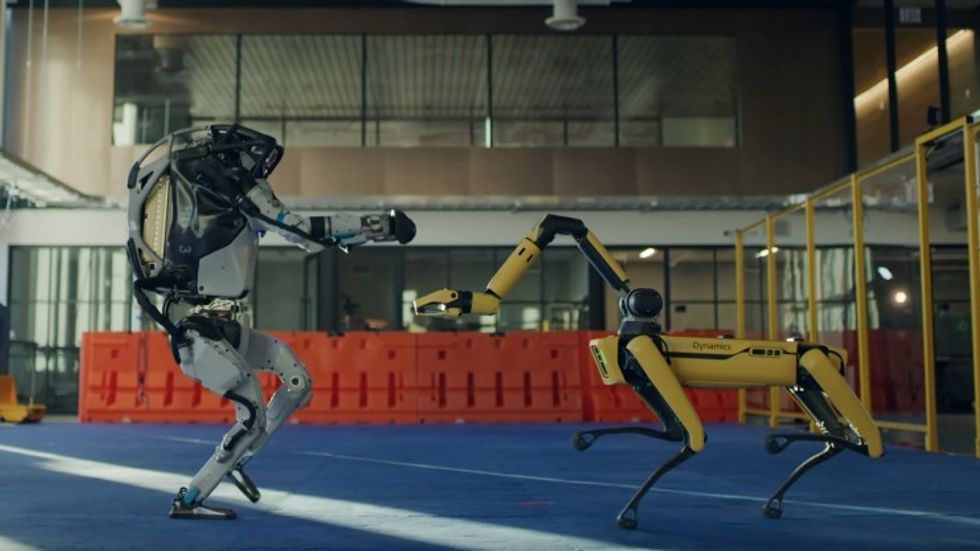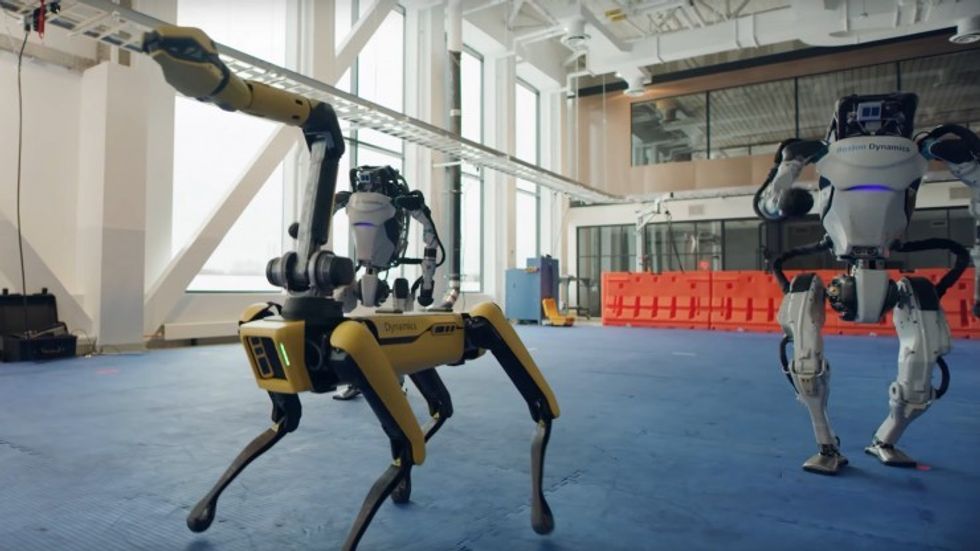What Can These Dancing Robots Teach Us About VFX?
While watching these dancing robot videos and preparing myself for the eventual robot uprising, the thought occurred to me—"Why do these things look so fake?"

Boston Dynamics has put out a number of viral videos over the years. The robots that they make are obviously incredibly kinetic and smooth and really interesting to look at, albeit a bit unsettling at times. Every time I sit and watch it, the thought almost always occurs to me: "If this were a VFX shot, I would put more work into the compositing, it doesn't quite look real."
Let's talk about why that is.
This video kind of drives me nuts. Word on the street is that there is no CG included in the Boston Dynamics videos. Even sitting here right now writing this article, I still have a hard time believing it. There are moments in the video that definitely seem real, and some that I'm almost certain the robot is a CG asset.
Let's say we take them at their word and try to believe that this is fully real and not just a really well-done VFX sequence.
Why does it look so fake? The answers may have useful implications from a VFX/filmmaking perspective.
Frame of Reference
When it comes to VFX, one of the biggest aspects that makes a shot hard to sell realistically with CGI is when we currently have no tangible real-life frame of reference for what is being shown.
Roland Emmerich's 2012 is a great example of this. This movie is rich with some of the most top-notch environmental destruction scenes in film history, even more impressive when you consider it was made in 2009. However, as a viewer, it still just feels like it's all pretty fake, and for lack of a better term, "CGI-ish."
That's because we have no frame of reference for the large-scale destruction in the film.
I've personally never been driving on a road that collapsed into the earth's core, and I sure hope none of you have, either. I've also never seen a smoke plume explosion taller than the Empire State Building in person either. So when you see these things in film, they just play as CGI, no matter how many smoke simulations you run.
On the other hand, in real life, explosions on that scale look quite a bit similar to the ones we see in the movies. We just don't see it very often in person or filmed in super high resolution, so on film, it just looks like it's CGI.
I think the same thing applies here. How often do we see three or four robots doing a perfectly choreographed dance number with extremely smooth movements and almost eased key-frame level animation? It's new. I've never seen it before at all, so I may perceive it as fake.
I guess the good news here is that VFX artists are really quite a bit closer to realism than it may seem at times.
Super Smooth Materials
One of the first tricks a CG artist pulls out of their toolbox to make a shot feel more photo-real is to add more surface imperfections to their materials. To get a photo-real render, you need those smudges, scratches, and cracks that any solid object on the planet gets over time.
A VFX artist would tell you that any material that's perfectly clean and doesn't have at least a slight amount of visibly worn texture on it isn't real enough.
Well, these squeaky-clean Boston Dynamics robots would tell you otherwise.

I've become so used to seeing scratched-up weathered robot characters that a clean one just almost feels like it doesn't make sense. I'm sure these robots have a smudge or two when you're up close, but at this distance, they really just look like super clean shiny polygons.
Camera Motion and Motion Blur

Finally, another thing that really makes this video feel like CG is the camera movement.
I'd imagine, them being them, Boston Dynamics is using some sort of super ridiculous camera robot system here. The movement is just so smooth, zooming in and out (perhaps digitally) and moving in circular patterns around the subjects.
In fact, the camera is really doing almost all of the things that tutorials will tell you not to do if you want to have realistic camera motion. For more realism, you'd probably add some handheld camera wiggle or even a bit of intentional overshooting on framing. Rarely do you see cameras (even ones on gimbals or other stabilizers) look quite this smooth and calculated. You'd add some more perceived human error.
This, paired with the fact that there is very little motion blur in the piece, and it's also shown in 30fps as opposed to 24fps, really kind of seals the deal.
So, at times, It looks like a CG sequence to my eye.
What We Can Learn
So what can we learn from all this? I just know that those robots look kinda fake to me, but they apparently aren't.
Would it have looked better if there were more surface imperfections added to the robots (maybe by doing this)? Or if the animations were a little more jerky or machine-like? No, not really, because this is actually real life, and the robots are clean and the movements are actually that smooth.
It definitely raises a thought about how viewers are trained to perceive things because of what we're used to from watching special effects and how they actually do perceive things that they've never seen before.
Do you have thoughts? Share them in the comments.













